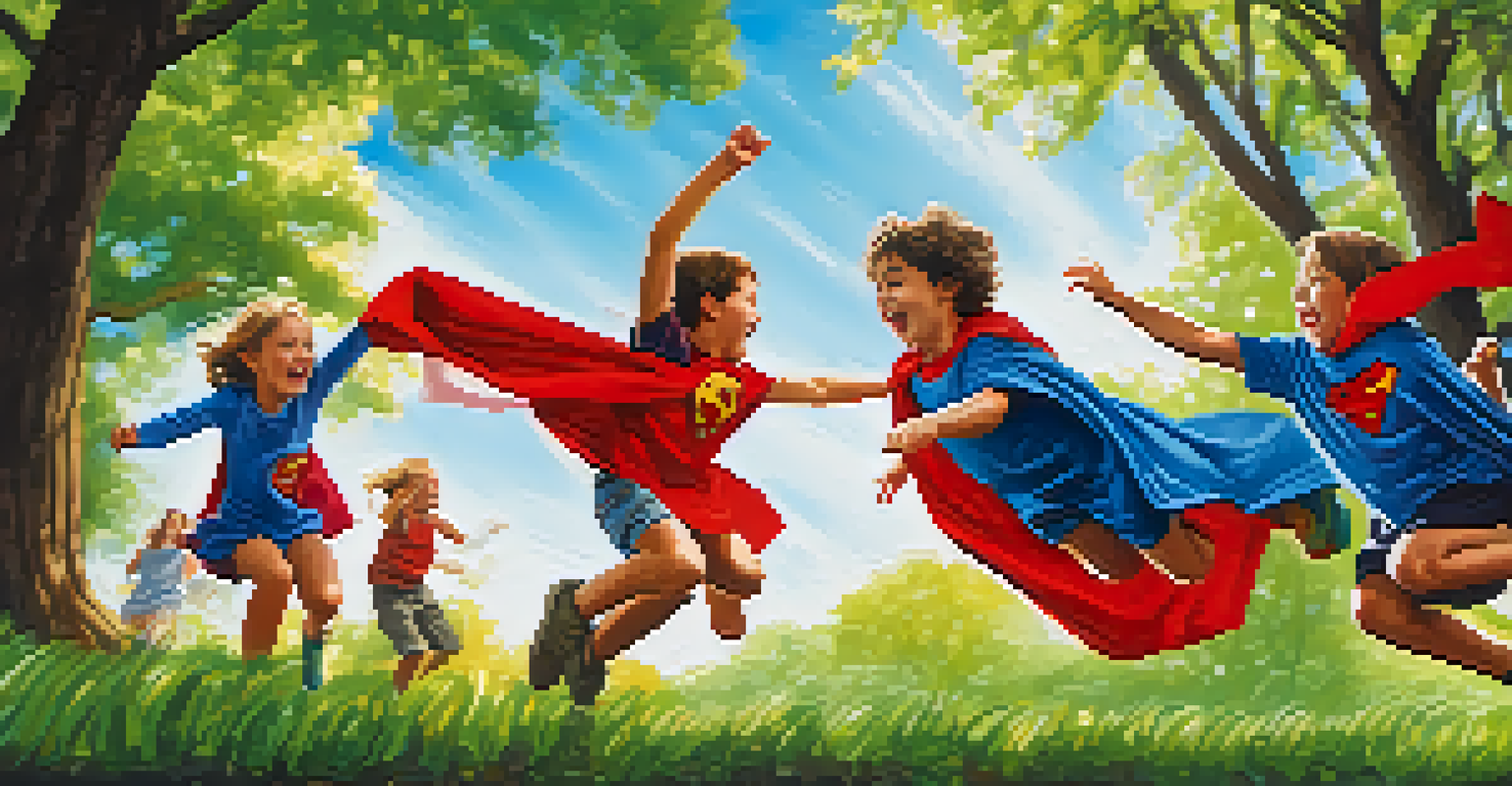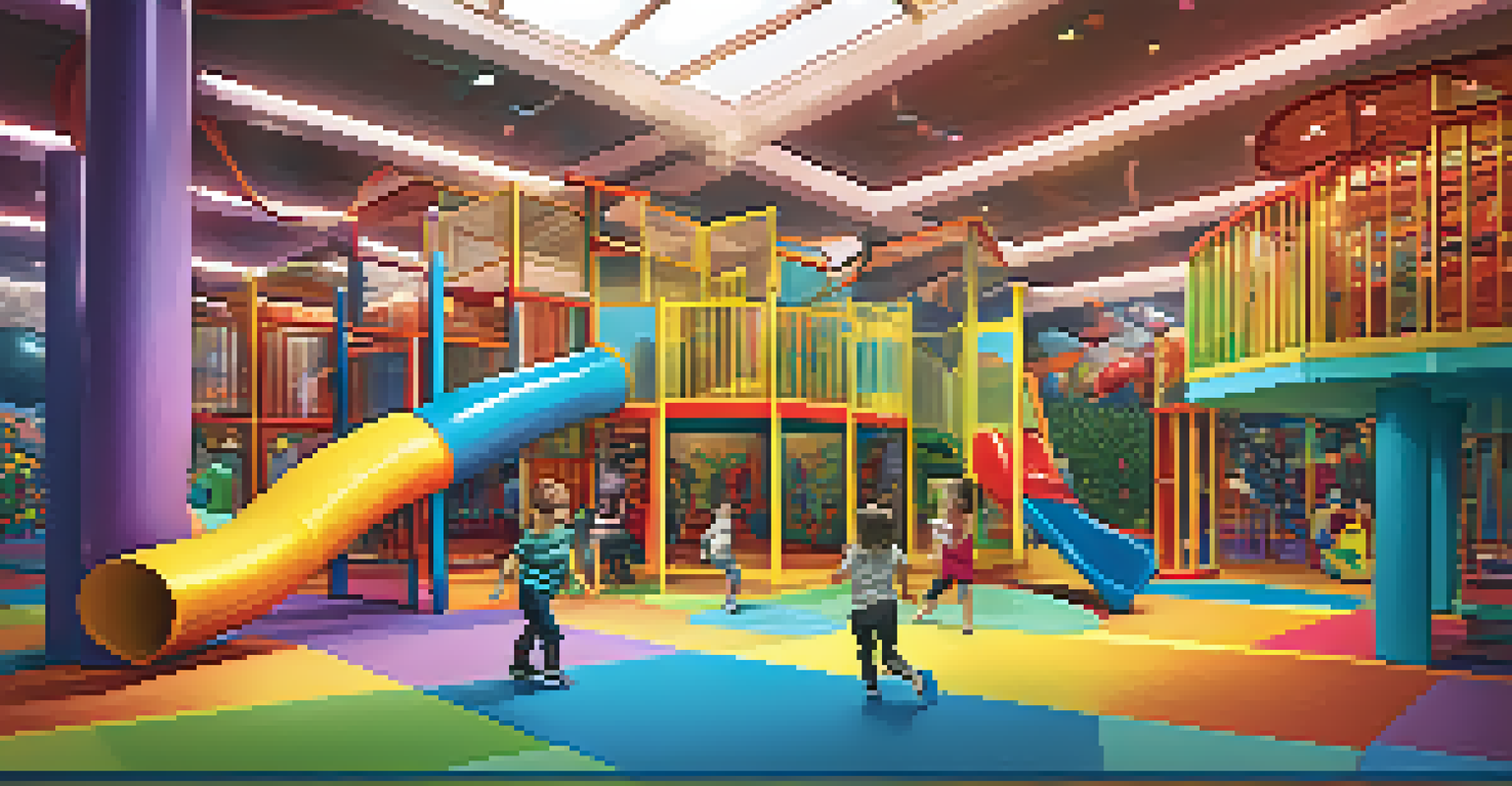Understanding Physical Development Through Dance and Play

The Importance of Physical Development in Early Childhood
Physical development during early childhood is crucial for overall growth. This stage lays the foundation for motor skills, coordination, and body awareness. Engaging in physical activities helps children build strength and endurance, which are vital for their daily activities and interactions.
Play is the highest form of research.
As children explore their physical capabilities, they also gain confidence in their movements. Whether it's running, jumping, or climbing, each action contributes to their understanding of how their bodies work. This self-awareness fosters a sense of achievement, encouraging them to take on new challenges.
Moreover, physical development is linked to cognitive and emotional growth. As children engage in activities like dance and play, they not only enhance their physical skills but also develop social skills and emotional intelligence through teamwork and expressing themselves creatively.
How Dance Encourages Physical Development
Dance is a dynamic form of physical activity that combines movement with creativity. Through dance, children learn to control their bodies, develop balance, and improve coordination. It allows them to express emotions while engaging in a fun and energetic way.

Different dance styles introduce various movements that challenge children's physical abilities. For instance, ballet emphasizes grace and poise, while hip-hop encourages rhythm and strength. This variety not only keeps children engaged but also enhances different aspects of their physical development.
Physical Growth Shapes Overall Health
Physical development in early childhood is essential for building motor skills, coordination, and confidence.
Additionally, dance provides a structured environment where children can learn discipline and focus. As they practice routines and performances, they develop perseverance and patience, skills that are beneficial both in and outside of dance.
The Role of Play in Physical Development
Play is often regarded as the natural way for children to learn and grow. It encourages exploration and experimentation, allowing kids to test their physical limits in a safe environment. Through play, children develop gross motor skills by running, jumping, and climbing.
Dance is the hidden language of the soul.
Imaginative play, such as pretending to be animals or superheroes, further enhances their physical capabilities. These activities require children to mimic various movements, promoting flexibility and strength. Plus, they stimulate creativity, blending physical activity with imaginative thinking.
Moreover, play fosters social skills as children often engage in group activities. Whether playing tag or building a fort, they learn cooperation, negotiation, and conflict resolution, all while developing their physical abilities.
Social Benefits of Dance and Play Activities
Participating in dance and play offers significant social benefits for children. These activities often involve collaboration with peers, helping them build friendships and learn how to work as a team. Social interactions during these activities teach valuable lessons about empathy and communication.
In group dance classes or team sports, children learn to appreciate the strengths and differences of others. They realize the importance of supporting one another, fostering a sense of community and belonging. Such experiences can be vital for developing emotional intelligence.
Dance and Play Boost Social Skills
Engaging in dance and play helps children develop teamwork, empathy, and effective communication with peers.
Furthermore, these social skills extend beyond dance and play, impacting children's future relationships. The ability to connect with others, share experiences, and navigate social dynamics is essential for their overall development.
Cognitive Development Through Dance and Play
Dance and play are not only physical activities but also powerful tools for cognitive development. As children learn dance routines or engage in strategic games, they enhance their memory and concentration. This mental engagement is crucial for their overall learning process.
Problem-solving skills are also sharpened during play. When faced with challenges in games or dance choreography, children must think critically and adapt their strategies. This ability to analyze situations and make decisions is a key component of cognitive growth.
Additionally, following instructions in dance or play enhances children's listening skills and comprehension. As they learn to interpret cues from teachers or peers, they become more adept at processing information, which translates to improved academic performance.
Emotional Growth Through Dance and Play
Engaging in dance and play allows children to explore and express their emotions freely. Dance, in particular, offers a unique outlet for feelings, enabling kids to convey joy, frustration, or excitement through movement. This emotional expression is crucial for their mental well-being.
Through play, children navigate various scenarios that teach them how to handle different emotions. Whether it's winning or losing a game, they learn resilience and coping strategies. These experiences build emotional intelligence, which is vital for their future relationships and self-regulation.
Cognitive Skills Enhanced Through Movement
Activities like dance and play improve children's memory, problem-solving abilities, and listening skills, crucial for learning.
Moreover, the joy and fulfillment derived from dance and play contribute to positive self-esteem. When children succeed in mastering a dance move or achieving a goal in a game, they feel a sense of accomplishment that boosts their confidence and encourages them to pursue new challenges.
Incorporating Dance and Play into Daily Routines
Incorporating dance and play into children's daily routines can be simple and fun. Parents can set aside time for dancing in the living room or organizing playdates that encourage active games. This not only promotes physical activity but also strengthens family bonds.
Moreover, schools and childcare centers can integrate dance and play into their curricula. By including structured playtime and dance classes, educators can enhance children's physical and social development while making learning enjoyable.

Finally, encouraging outdoor play is essential. Nature provides a vast playground for children to explore, climb, and run, fostering their physical development. By creating a balanced routine that includes dance and play, parents and caregivers can support holistic growth in children.